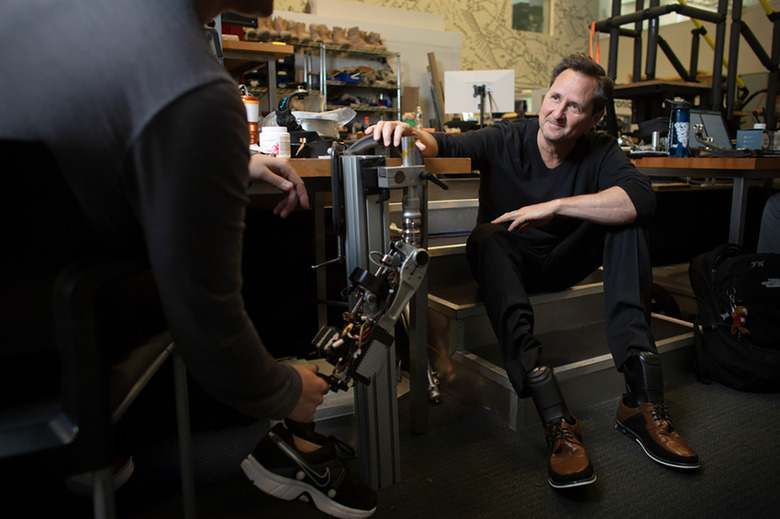New Bionic Legs Plug Directly Into A Patient's Brain
Scientists at the Massachusetts Institute of Technology (MIT) have showcased a new type of bionic leg that can be plugged directly into the patient's brain. The prosthetic is surgically connected to the patient's nervous system, allowing the patient's brain to feel and control the robotic leg. This can help provide a level of brain control not possible in regular prosthetics—while also allowing patients to return to a more natural gait.
It's a huge step forward for prosthetics as a whole, and the scientists outline the details in a new study published in the journal Nature Medicine. That study highlights the experiences of seven individuals who received the new prosthetic.
So far, only around 60 people worldwide have undergone the procedure, which is known surgically as an agonist-antagonist myoneural interface (AMI). It's a complex surgery that reconnects the muscles in the patient's residual limb after an amputation—in the cases surrounding this particular study, the new bionic leg.
These connections allow the central nervous system to send electrical signals from the brain to the leg, relaying movement cues from the brain that then pass through the muscles and can be detected by electrodes installed in the prosthetic limb. Signals about the movement and position of the prosthetic are then fed back to the nervous system and carried back to the brain—as if it were a real leg.
The video embedded above shows the bionic leg in action. It still very much looks like a part of a robot attached to a human, but considering the level of freedom it restores to the patient after the surgery, the prosthetic is nothing short of a technological breakthrough—or a miracle, if you will—for those who want a more naturally controlled prosthetic.
According to a new study released in Nature Medicine, the seven patients who received AMI surgeries and the new prosthetic were able to walk faster than people who received the same type of prosthetic limb but had traditional amputations. Some could even walk at the same rate as individuals who had not had any amputations.
The scientists report that the patients who received AMI to use the bionic leg also experienced less pain and muscle atrophy overall—another big breakthrough for these types of cases. This isn't the first time we've seen tech blend so closely with the human body, either. Previous development of a bionic eye that could restore vision has also shown great potential.
